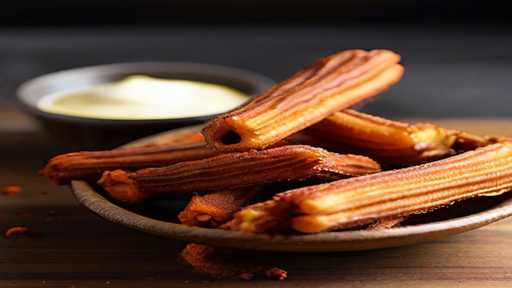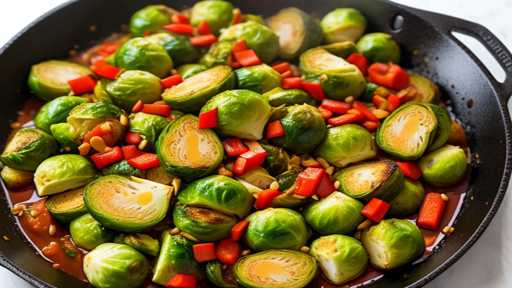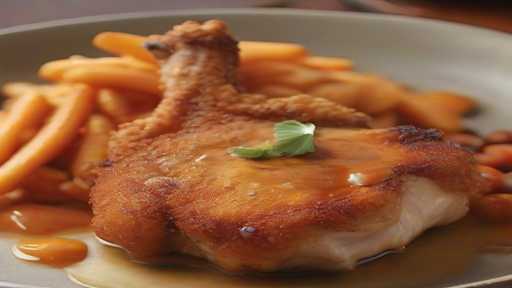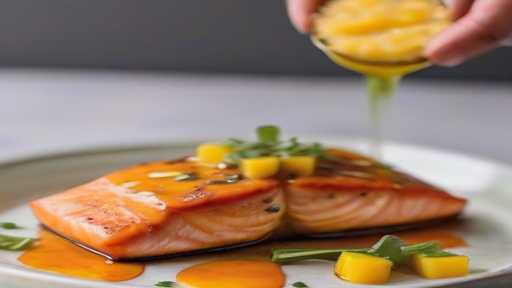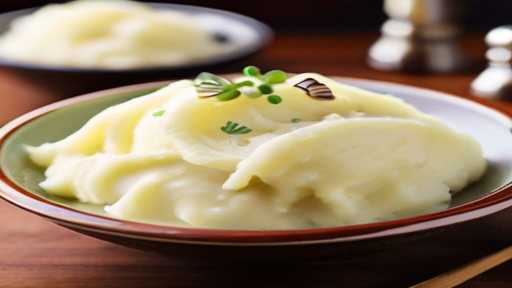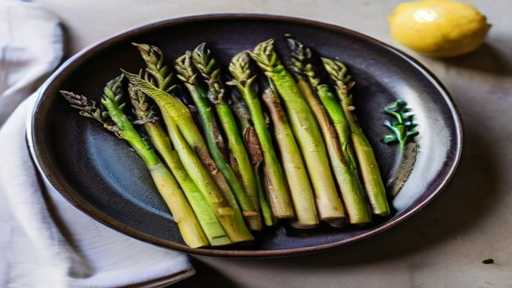How to Cook Thai Red Curry Shrimp: A Delightful Undertaking
Savor the exquisite Thai Red Curry Shrimp in a vibrant and delicious world of Thai cuisine. This delicious dish combines juicy shrimp with a rich, aromatic blend of red curry paste, coconut milk, and a variety of fragrant herbs and spices. Each bite is a symphony of bold, harmonious flavors, creating a dining experience reminiscent of the bustling streets of Thailand. Enjoy the perfect balance of spicy, creamy, and seafood with our Thai Red Curry Shrimp.
Origin of Thai Red Curry Shrimp
Thai Red Curry Shrimp can be traced back to Thailand, where it was developed as a vibrant and aromatic Thai dish. Combining juicy shrimp with a rich coconut milk-based curry infused with aromatic spices such as red chili pepper, garlic and lemongrass, this dish showcases the unique balance of flavors that characterize Thai cuisine. . Its popularity transcends borders and is beloved as an iconic expression of Thai gastronomy, known for its complexity and harmonious blend of sweet, spicy and savory flavours.
What is Thai red curry shrimp?
Thai Red Curry Shrimp is a mouth-watering, aromatic dish that showcases the bright flavors of Thai cuisine. Juicy shrimp are tossed in a rich and creamy coconut milk-based sauce with the unique spiciness of red curry paste. This dish combines sweet, spicy, and savory aromas, further enhanced by the addition of aromatic herbs and vegetables. When served with rice, the combination of tender shrimp, velvety curry, and a symphony of exotic Thai spices creates a truly delicious dining experience.
Thai Red Curry Shrimp Ingredients:
- Red Curry Paste Ingredients:
- 1. 3-4 dried red chili peppers, soaked in warm water
- 2. 2 shallots, chopped
- 3. 4 garlic cloves, chopped
- 4. 1 lemongrass stalk, sliced (only bottom half used)
- 5. 1 thumb-sized Genuine galangal or ginger slices,
- 6. 1 teaspoon ground coriander
- 7. 1/2 teaspoon ground cumin
- 8. 1/2 teaspoon shrimp paste (optional)
- 9. Zest of 1 lime
- 10. 2 tablespoons vegetable oil
- For the curry:
- 1. 1 pound (450 g) large shrimp, peeled and deveined
- 2 . 1 can coconut milk (14 oz/400 ml)
- 3. 2 tablespoons red curry paste (top)
- 4. 1 red bell pepper, sliced
- 5. 1 yellow bell pepper, sliced
- 6. 1 cup (150 g) Bamboo shoots, cut
- 7. 1 cup (150 g) sugar peas, ends cut off
- 8. 1 tablespoon fish sauce
- 9. 1 tablespoon soy sauce
- 10. 1 tablespoon brown sugar
- 11. Juice of 1 lime
- 12. Fresh coriander leaves for garnish
- 13. Cooked jasmine rice for serving
- Optional garnishes:
- 1. Thai basil leaves
- 2. Sliced red chili peppers
- 3. Lime wedges
- Alternative ingredients:
- • Shrimp: Can be used in place of shrimp. chicken or tofu, or a vegetable mixture for a vegetarian version.
- • Galangal: If you can’t find galangal, you can substitute ginger.
- • Fish sauce: Soy sauce can also be used, but the amount should be adjusted according to taste.
- • Coconut milk: For a lighter version, you can use light coconut milk or replace it with almond milk.
- • Bamboo shoots: Water chestnuts or baby corn can be substituted.
- • Red chili pepper: Adjust the amount of red chili pepper to suit your spice preference.
- • Lemongrass: Use lemongrass paste or grated lemon zest as a substitute.
- • Thai basil: If Thai basil is not available, you can use regular basil.
Here is the list of kitchen tools or equipment needed to prepare Thai Red Curry Shrimp:
- 1. Chef Knife: Used for chopping vegetables, herbs and preparing shrimp .
- 2. Cutting board: Provides a stable surface for cutting and slicing food.
- 3. Wok or frying pan: For cooking and frying shrimp and vegetables.
- 4. Wooden spoon or spatula: Used to stir or toss ingredients in a wok or frying pan.
- 5. Can opener: When using canned ingredients such as coconut milk and bamboo shoots.
- 6. Grater: For grating fresh ginger and garlic.
- 7. Measuring spoons, measuring cups: Accurately measure ingredients such as curry paste, fish sauce, etc.
- 8. Peeler: Used to peel and prepare vegetables such as carrots and potatoes.
- 9. Garlic Press: If you want to use a press to mince garlic.
- 10. Medium pot: Used to prepare rice or noodles to be served with curry.
- 11. Strainer or Colander: Used to strain and rinse ingredients such as shrimp and canned goods.
- 12. Ladle: A ladle for serving curry on plates or bowls.
- 13. Pestle and Mortar: If you want to use whole spices or crush herbs to make a fresh paste.
- 14. Tongs: Used to handle shrimp and other ingredients during cooking.
- 15. Grill or Oven: If you want to grill or bake your shrimp instead of frying them.
Cooking Instructions:

- Preparation: Thai Red Curry Shrimp
- 1. Preparation of shrimp:
- • Peel and devein the shrimp.
- • If frozen, thaw in cold water for a few minutes.
- 2. Cut the vegetables:
- • Slice the red pepper very thinly.
- • Peel the snap peas and shred the carrots.
- 3. Cooking Sauce:
- • Combine red curry paste, fish sauce, soy sauce, brown sugar, and lime juice in a bowl.
- 4. Cooking Instructions:
- a. Hot Oil:
- • In a large skillet or wok, heat 2 tablespoons of vegetable oil over medium-high heat.
- b. Grilling Shrimp:
- • Add the shrimp to the skillet and fry for 2 to 3 minutes on each side, until pink and opaque. Take out of the pan and place aside.
- c.Saute vegetables:
- • If necessary, add a little extra oil to the same skillet.
- • Fry the red peppers, sugar peas and shredded carrots for 2-3 minutes until slightly softened.
- d. Add curry sauce:
- • Add the prepared curry sauce and stir well to coat the vegetables.
- e. Boil:
- • After adding the coconut milk, heat the mixture until it boils. Simmer for 5 to 7 minutes to let the flavors meld.
- f. Add the shrimp back:
- • Return the cooked shrimp to the pot and cook for another 2 to 3 minutes until cooked through.
- g. Servings:
- • Serve Thai red curry shrimp over cooked jasmine rice.
- • Garnish with fresh coriander leaves.
- a. Hot Oil:
- 1. Preparation of shrimp:
- Critical Points: Thai Red Curry Shrimp
- • Be careful with red curry paste. Adapt the quantity to your preferred level of spiciness.
- • Do not cook the shrimp for too long to prevent them from becoming tough.
- • Adjust the amount of red curry paste used to adjust the heat.
- • Taste the curry and adjust the fish sauce, soy sauce, sugar, etc. to your taste before enjoying.
Thai Red Curry Shrimp pairing

- 1. Jasmine Rice:
- • Light and aromatic, jasmine rice is a classic accompaniment to Thai cuisine. Its neutral flavor provides a nice textural contrast while balancing the spiciness of the red curry.
- 2. Coconut Rice:
- • Eating it with coconut rice enhances the coconut flavor of the curry. The creamy and slightly sweet aroma of coconut rice brings out the richness of the red curry.
- 3. Vegetable Bread:
- • Add freshness and crunch to your dishes with a colorful mix of fried vegetables such as peppers, broccoli, carrots and peas. The contrast with the delicate shrimp is also wonderful.
- 4. Pineapple Salsa:
- • The sweetness and spice of pineapple salsa balances the spiciness of the curry. For a refreshing topping, dice pineapple, red onion, cilantro, and lime juice.
- 5. Mango Salad:
- • A light mango salad with fresh mango, cucumber, red onion, and mint provides a cooling, sweet flavor that offsets the spiciness of the curry.
- 6. Quinoa with Cilantro and Lime:
- • For a healthier option, serve Thai red curry shrimp over coriander and lime-infused quinoa. The citrus scent of lime and the freshness of coriander bring out the flavor of the curry.
- 7. Naan or Roti:
- • Enjoy curry with warm naan or roti. The chewy texture of the bread goes well with the flavor of the curry sauce.
- 8. Thai Iced Tea:
- • To complete your Thai culinary experience, pair this dish with a refreshing Thai Iced Tea. This sweet and creamy black tea will help cleanse your palate after enjoying a spicy curry.
- 9. Cucumber Mint Yogurt Sauce:
- • Cool, tangy cucumber mint yogurt sauce provides a refreshing contrast to the spiciness of the curry. Simply mix finely chopped cucumber, mint, and yogurt to create a delicious dipping sauce.
- 10. Thai Basil Fried Rice:
- • Thai red curry shrimp makes your meal even more delicious when served with aromatic Thai basil fried rice. The fragrant basil gives the curry a unique flavor and brings out the spiciness of the curry.
- 11. Pasta with Lemongrass:
- • Add lemongrass to your favorite pasta for a lemony flavor. A subtle citrus aroma enhances the overall flavor of the dish.
- 12. Grilled Pineapple Skewers:
- • Grilling pineapple skewers adds a smoky, caramel-like sweetness. The charred pineapple bits create a wonderful contrast to the creamy curry.
- 13. Sesame Ginger Broccoli:
- • Stir-fry broccoli with sesame oil and ginger to create a side dish with a crunchy texture and aromatic flavor that complements the shrimp.
- 14. Avocado Salad:
- • Mixing creamy avocado pieces with lime juice and coriander creates a creamy, cooling aroma that can balance out the spiciness of a curry.
- 15. Papaya Slaw:
- • Add grated green papaya, carrots, and a tangy dressing for a tropical papaya slaw. Coleslaw adds a crunchy, flavorful element to your meal.
- 16. Roasted Cashew Nuts:
- • Sprinkle roasted cashew nuts on top of the curry for an extra crunch and nutty flavor. The flavor of toasted cashew nuts and the richness of coconut milk go well together.
- 17. Lime Wedges:
- • Serve on a plate with lime wedges on the side. Squeezing fresh lime into the curry just before serving brings out the brightness and acidity of the entire dish.
- 18. Chili Garlic Edamame:
- • Mix edamame with chili sauce for flavor. This makes for a delicious, protein-rich side dish that complements the bold flavors of the curry.
Thai Red Curry Shrimp Cooking Tips:
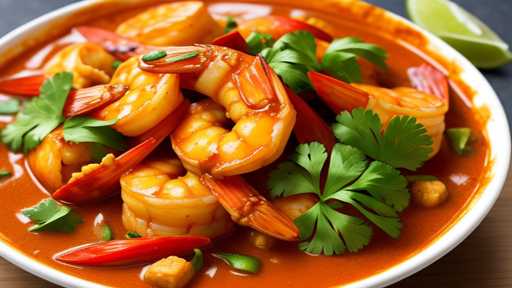
- 1. Choose quality ingredients: Start with fresh, high-quality shrimp and authentic Thai red curry paste. Using fresh vegetables and coconut milk will enhance the overall flavor of the dish.
- 2. Important Preparation Tasks: Prepare all ingredients before you start cooking. Finely chop the garlic, chop the vegetables, and devein the shrimp beforehand. This ensures a smooth cooking process.
- 3. Do not overcook the shrimp. Because shrimp cook quickly, overcooking can result in a rubbery texture. Fry the shrimp until they turn pink and immediately remove from the heat.
- 4. Layers of flavor: Create layers of flavor by frying the curry paste in oil until fragrant. If you want a more authentic taste, add flavorings like garlic, ginger, or lemongrass.
- 5. Balance of sweet, sour, salty and spicy: Thai cuisine is known for its balanced variety of flavours. Sweeten with palm sugar, sour with lime juice, and salt with fish sauce. Adjust the amount of red curry paste to adjust the spiciness.
- 6. Customize vegetables: Add or replace vegetables according to your taste or season. Green peppers, bamboo shoots, baby corn, etc. go well together.
- 7. Coconut milk consistency: If you prefer a richer curry, use full-fat coconut milk. For a lighter version, use light coconut milk. Shake the can of coconut milk to make sure it’s well mixed before opening.
- 8. Add some freshness: Finish your dishes with fresh cilantro, basil, or mint to add some freshness. Squeeze a lime wedge over the top to add a zesty flavor to the finished dish.
- 9. Serve with Side Dishes: Serve Thai red curry shrimp with jasmine rice, rice noodles, or quinoa. Starch helps balance the spiciness of the curry.
- 10. Adjust the spice level: Thai red curry can be very spicy. To control spiciness, start with a small amount of curry paste and adjust to taste. You can always add more later if needed.
- 11. Enjoy: Thai curries often develop more flavor when they sit. You can get a richer flavor by making the curry a day in advance and reheating it before serving.
- 12. Dietary Modifications: Those with dietary restrictions can make this dish gluten-free by using gluten-free soy sauce or tamari. Adjust the spice level if you prefer a milder or spicy taste.
Serving Suggestions for Thai Red Curry Shrimp:

- 1. Presentation: Thai Red Curry Shrimp
- • Serve the Thai Red Curry Shrimp in a shallow bowl or plate with slightly raised edges to hold the delicious curry sauce.
- • Place the red curry shrimp in the center of the plate to highlight the bright colors of the curry and shrimp.
- 2. Garnish:
- • Sprinkle freshly chopped coriander on top for added freshness and flavor.
- • Slice green onions thinly and sprinkle them on the dish to add a mild onion flavor and a pop of color.
- • Place a lime wedge on the side of each plate for guests to squeeze onto their plates to bring out the citrus flavor of the curry.
- 3. Side Menu:
- • Steamed Jasmine Rice: Serve Thai red curry shrimp with a side of fluffy steamed jasmine rice to absorb the spicy curry sauce. Rice provides a neutral base that complements the bold flavors of the curry.
- • Vegetable Bread: A colorful mix of fried vegetables such as peppers, broccoli, and sugar peas is the perfect side dish. The crunchy texture and bright color go well with the rich and flavorful shrimp curry.
- • Cucumber Salad: Make a refreshing cucumber salad using thinly sliced cucumbers, red onions, and cherry tomatoes. Toss the salad with a light vinaigrette made with rice vinegar, soy sauce, and a little sesame oil.
- 4. Table Setting:
- • Enhance your dining experience by setting your table with Thai-inspired decor, such as bamboo placemats and colorful tablecloths.
- • Following Thai dining tradition, provide chopsticks and forks so guests can choose their own utensils.
- 5. Recommended Drinks:
- • Pair Thai Red Curry Shrimp with a cold, fresh Thai beer or citrus-flavored white wine. We also recommend Thai iced tea, which provides a sweet and refreshing contrast to the spiciness of the curry.
Storage and Leftover Thai Red Curry Shrimp:
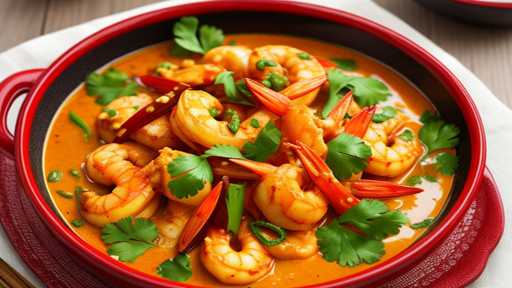
- Storage: Thai Red Curry Shrimp
- 1. Refrigerate: Immediately refrigerate leftover Thai Red Curry Shrimp in an airtight container. This maintains freshness and prevents the growth of bacteria.
- 2. Separation: If you are serving rice or other accompaniments to your curry, consider storing them separately to maintain their respective textures and flavors.
- 3. Label: Always label containers with dates to track freshness. Thai red curry shrimp can usually be stored in the refrigerator for 2 to 3 days.
- Reheating: Thai Red Curry Shrimp
- 1. Stovetop method: For best results, reheat the shrimp with the Thai red curry on the stovetop. Put in a pot and warm it up over medium heat. Stir occasionally to ensure even heating.
- 2. Microwave: If you don’t have time, you can use the microwave. Place the curry in a microwave-safe container, cover loosely, and heat briefly, stirring occasionally. Prevents uneven heating.
- 3. Add moisture: If the curry looks dry when reheating, add coconut milk or water to restore it to its original consistency.
- 4. Check Temperature: Make sure the entire dish has reached a safe internal temperature (165°F or 74°C) before serving.
- Additional Tips: Thai Red Curry Shrimp
- 1. Fresh Ingredients: The quality of reheated curry depends on the freshness of the ingredients. If possible, start by using fresh shrimp and vegetables when preparing your dishes.
- 2. Adjustment of seasoning: Flavor may deteriorate during storage. So, check the taste of the warmed curry and adjust the spices if necessary. You may need to add a little more salt, lime juice, or fish sauce for better flavor.
- 3. Avoid freezing: Thai Red Curry Shrimp can be frozen, but the texture of the shrimp may change when thawed. If freezing is required, consider omitting the shrimp and adding fresh shrimp when reheating.
The approximate nutritional breakdown per serving of Thai Red Curry Shrimp is as follows:
- Thai Red Curry Shrimp (per serving):
- • Calories: Approx. 300-350 kcal
- • Fat: Approx. 20 g
- • Saturated fat: 10 g
- • Unsaturated fat: 5-10 g
- • Protein: approximately 20-25 g
- • Carbohydrates: approximately 15-20 g
- • Dietary fiber: 2-4 g
- Notes: Nutrition Prices may vary depending on recipe. and the ingredients used.
Here are some variations of Thai Red Curry with Shrimp:
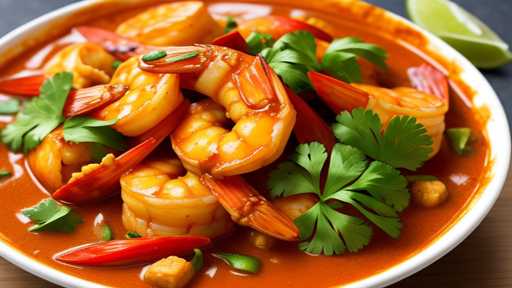
- 1. Vegetarian Thai Red Curry:
- • Replace the shrimp with tofu or your favorite vegetable mix, such as peppers, broccoli, or peas.
- • You may make a totally vegetarian version by substituting veggie stock for chicken broth.
- 2. Alternatives to Coconut Milk:
- • Try different types of coconut milk, including: B. Light coconut milk or coconut cream to adjust the richness of the curry.
- 3. Protein Swaps:
- • Substitute chicken, beef, or scallops for shrimp for a different flavor.
- 4. Spice Level:
- • Adjust spice level by adding more or less red curry paste to taste.
- • Add some fresh chili peppers or chili flakes for an extra kick.
- 5. Citrus Twist:
- • Add freshness to your curry by squeezing lime or lemon juice just before serving.
- 6. Herbal Tea:
- • Enhance the flavor with additional herbs such as coriander, basil, and mint. Mixing it at the end will give it a refreshing feel.
- 7. Add Pineapple or Mango:
- • To balance the spices, add pineapple chunks or mango cubes for sweetness.
- 8. Nutty Crunch:
- • Sprinkle crushed peanuts or cashews on top before serving to add texture and nutty flavor to the dish.
- 9. Rice Noodle Bowl:
- • Serve Thai red curry shrimp over rice noodles for a delicious variation. This is how to make Thai curry noodle bowl.
- 10. Fish sauce substitutions:
- • For a vegetarian version, replace fish sauce with soy sauce or tamari.
- 11. Red Curry Soup:
- • Increase the amount of soup to transform it into Thai Red Curry Shrimp Soup. Enjoy with crunchy bread or rice.
- 12. Root Vegetables:
- • Adding root vegetables such as sweet potatoes and carrots will make the curry more hearty.
- 13. Crispy Topping:
- • Garnish your curry with crispy fried shallots and garlic to add texture and flavor.
- 14. Egg Drop Upgrades:
- • Pour beaten eggs into simmering curry to create soft egg strips, add richness and make egg drops quickly.
- 15. Quinoa Base:
- • Serve Thai red curry shrimp over cooked quinoa as a nutritious and protein-rich alternative to rice.
- 16. Thai Basil Infusion:
- • Enhances the herbal flavor by using Thai basil in place of regular basil. Adding it at the end creates a unique aroma.
- 17. Curry Puff:
- • Turn curry into homemade curry puff filling. Cover the mixture with puff pastry for a delicious snack or appetizer.
- 18. Lemongrass Essence:
- • Purify the curry with lemongrass by adding crushed lemongrass stalks during cooking and removing before serving.
- 19. Tom Kha Style:
- • Create a fusion by incorporating elements of Tom Kha Gai (Thai coconut chicken soup). Add galangal, kaffir lime leaves, and a touch of lime to take the flavor to another level.
- 20. Grilled Shrimp Options:
- • Marinate the shrimp and grill them separately instead of boiling them in the curry. Add grilled shrimp to the curry just before serving for a smoky flavor.
- 21. Cashew Cream:
- • Replace coconut milk with cashew cream for a nutty, creamy taste. Stir the soaked cashews with water until smooth and add to the curry.
- 22. Sesame Seed Crunch:
- • Sprinkle roasted sesame seeds on finished dishes to add a nutty flavor and crunch.
- 23. Mushroom Mix:
- • Add an earthy flavor to your curry by adding a mix of mushrooms, such as shiitake or oyster mushrooms.
- 24. Green Curry Fusion:
- • Try green curry shrimp by replacing the red curry paste with green curry paste and adjusting the ingredients accordingly.
- 25. Jasmine Rice Pilaf:
- • Cook rice with aromatic spices like cumin and cardamom to make aromatic jasmine rice pilaf.
Recipe Notes: Thai Red Curry Shrimp
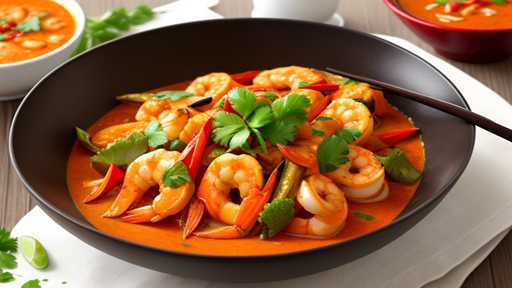
- 1. Shrimp Selection: Choose fresh, large shrimp for the best flavor and texture. For a prettier appearance, clean and devein the shrimp before cooking.
- 2. Red Curry Paste: Made with high quality Thai red curry paste for an authentic and bold flavor. You can adjust the amount according to your seasoning preferences. Apply a tiny amount at first, and more as necessary.
- 3. Coconut Milk: For a rich, creamy texture, choose full-fat coconut milk. Before opening, shake the coconut milk can well to ensure an even consistency.
- 4. Vegetables: Customize your dish by adding your favorite vegetables. Green peppers, bamboo shoots, and snow peas go well together. Make sure they are cut evenly so they cook evenly.
- 5. Fresh herbs: Thai basil leaves and coriander add freshness and depth to dishes. Add just before serving to preserve the bright flavor.
- 6. Fish sauce: An important ingredient in Thai cuisine, this ingredient imparts a delicious umami flavor. Please adjust the amount according to your taste preference. However, be careful as it can be very thick.
- 7. Palm Sugar: Traditional Thai red curry often includes palm sugar to add sweetness. If it’s not available, brown sugar might be used in its place.
- 8. Lime: Fresh lime juice adds a zesty kick. Squeeze just before serving to preserve the bright citrus flavor.
- 9. Cooking process: Preheat the wok or frying pan before adding the oil. Boil the shrimp quickly, making sure not to overcook them. Once the curry is simmering, resist the urge to stir it frequently and let the flavors meld naturally.
- 10. Rice Pairing: Serve Thai red curry shrimp over jasmine rice for an authentic taste. The faint aroma of rice brings out the rich flavor of the curry.
- Cultural Significance: Thai red curry is a staple of Thai cuisine, known for its perfect balance of spiciness, sweetness, and flavor. It reflects the country’s diverse culinary traditions, with influences from Indian, Chinese and Southeast Asian cuisines. This dish pays homage to the fresh ingredients and aromatic spices that make Thai cuisine popular around the world.
- Personal anecdote: This dish has a special place in my heart. I remember a trip to Thailand where I had the most delicious red curry shrimp at a small family-run restaurant. Recreating it at home will bring back fond memories of the vibrant street food culture and warm Thai hospitality.
In summary, Thai Red Curry Shrimp is a seductive blend of vibrant flavors. Juicy shrimp soaked in rich coconut milk and red curry sauce create a harmonious blend of sweet, spicy, and savory notes. Aromatic herbs and spices give dishes a special touch and make cooking enjoyable. Follow this easy recipe to take your taste buds on a gastronomic journey to Thailand. Immerse yourself in a symphony of flavors and enjoy the taste of authentic Thai cuisine.

